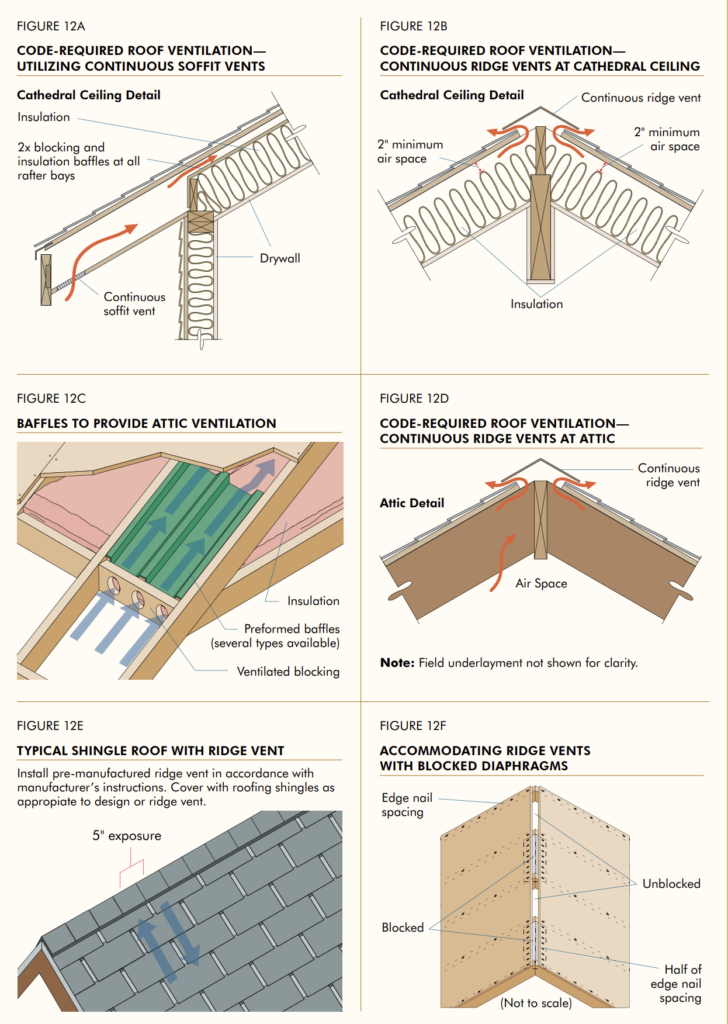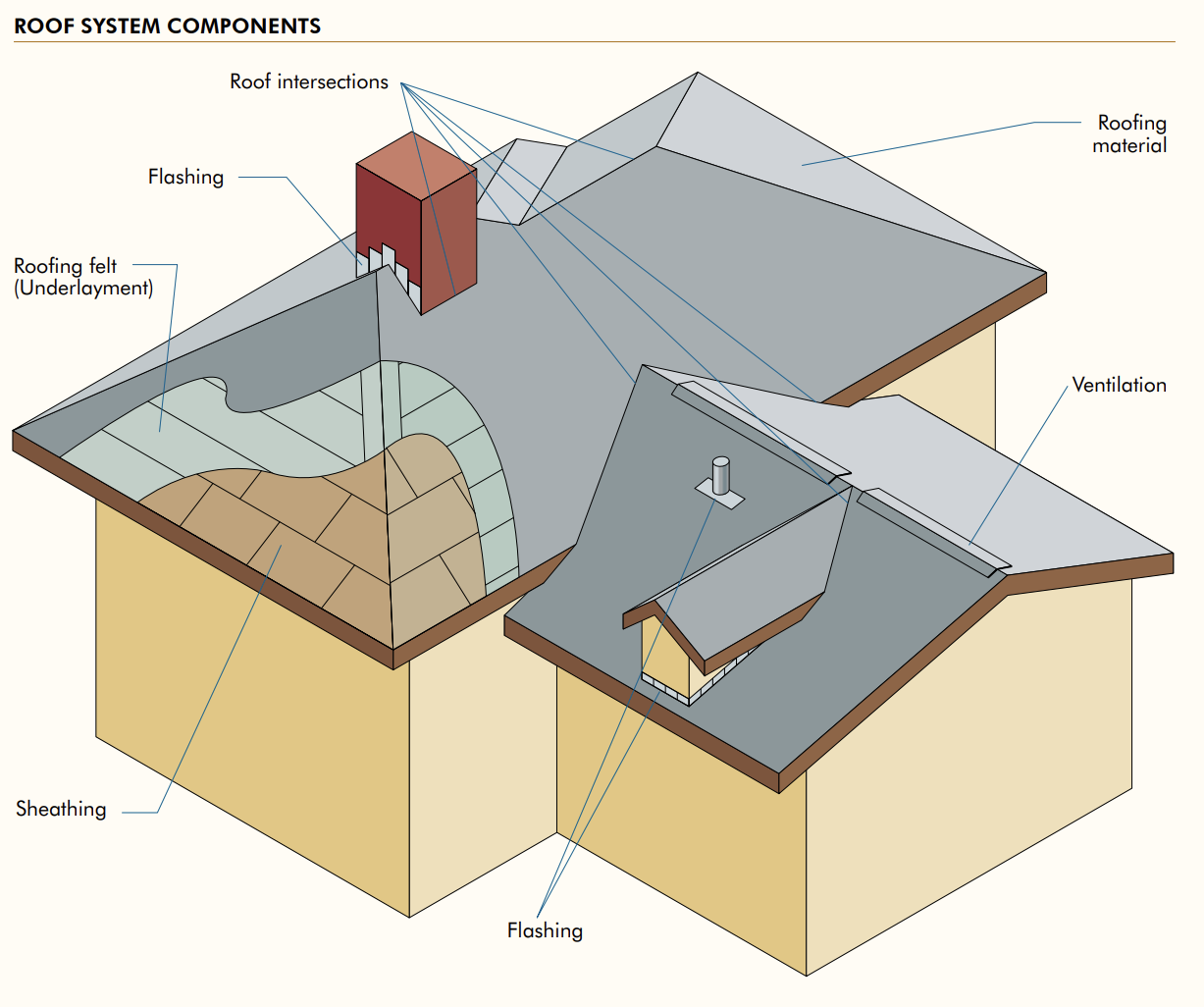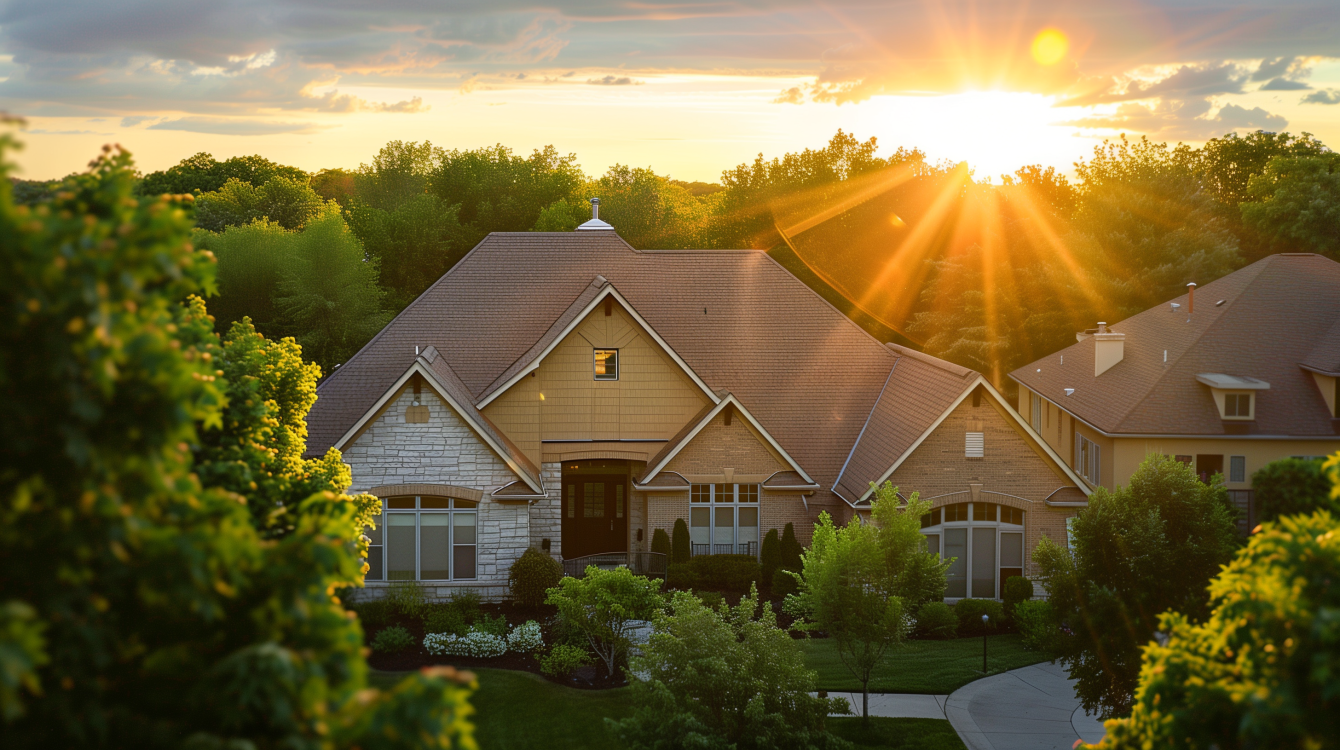In today’s value-engineered homes, engineered wood products play a vital role in creating resource-efficient, high-performance building systems. These products enhance the structural integrity of buildings, but improper construction practices can lead to moisture-related issues such as mold, mildew, and decay. While external factors like rain and snow are significant sources of moisture, internal sources like steam from showers and laundry rooms also impact building design. The key to addressing moisture buildup is prevention through proper construction techniques and ventilation.
A Closer Look at Roof Design
Low-Slope and Pitched Roofs
Roofing systems fall into two categories: low-slope roofs and pitched roofs. Each type employs different waterproofing methods to protect the interior. Pitched roofs rely on gravity and surface friction to direct water downward and outward. These systems utilize various elements like roofing felts, shingles, tiles, and flashing details to redirect rainwater. Conversely, low-slope roofing systems require a comprehensive waterproofing barrier across the entire roof and around every penetration. Proper installation is crucial for both types of roofs to ensure their effectiveness.
Roof Sheathing
Roof sheathing serves as the structural base for the roofing system and transfers external forces into the structural frame. Common materials used include wood structural panels like APA Rated Sheathing. Follow recommended nailing schedules for attaching sheathing to the framing.
Roofing Underlayment
Roofing underlayment, typically made of building paper or felt, acts as the initial weatherproofing layer for pitched roofs. It should be installed in layers, with each upper layer overlapping the lower one, to channel water away. On low-slope roofs, underlayment can serve various functions, depending on the roofing type applied over it.
Finished Roofing Materials
The visible roofing material provides the primary waterproof barrier. Pitched roofs often use shingles that overlap vertically and horizontally. Materials include asphalt shingles, slate, clay, concrete tiles, wood shingles, shakes, and metal shingles. Low-slope roofs use diverse systems, including single-ply, multi-ply, adhered, mechanically anchored, or ballasted options.
Roof Intersections
Most roof leaks occur at intersections, such as ridges, angles, walls, and penetrations. Proper detailing around these areas is crucial in preventing leaks.
Understanding Moisture Sources
Three primary sources of water in residential construction are leakage, infiltration, and vapor transmission. Leakage, often caused by improper flashing and roofing details, is the most significant contributor to water damage. Infiltration occurs due to differential air pressure, drawing moist air into cavities. Vapor transmission involves the passage of water vapor through an obstacle, usually requiring a vapor retarder.
Ventilation

Ventilation plays a critical role in preventing moisture-related issues. Proper roof ventilation allows air to flow over the sheathing, promoting drying in case of minor leaks. Additionally, ventilation lowers roof deck temperatures during summer, extending the life of roofing materials.
Special Considerations: Ice Dams
Ice dams form when heat loss through the roof causes snow to melt, refreeze, and accumulate. Proper detailing and insulation can mitigate the risk of ice dams.
By understanding the principles of moisture-resistant roof construction and implementing best practices, homeowners can ensure the longevity and integrity of their roofs while preventing moisture-related problems.
For immediate service or consultation, you may contact us at Allied Emergency Services, INC.
Contact Information:
- Phone: 1-800-792-0212
- Email: Info@AlliedEmergencyServices.com
- Location: Serving Illinois, Wisconsin, and Indiana with a focus on the greater Chicago area.
If you require immediate assistance or have specific questions, our human support is readily available to help you.
Disclaimer: This article is intended for informational purposes only. For professional advice, consult experts in the field










